

There were two types of code formats that used the same tube type codes, which were in use from 1948 until these companies stopped the manufacture of standard receiving tubes. The code format changed about 1955 or 1956. There are some deviations to this rule, and in certain manufacturing plants not all of the code protocol was followed exactly, with every batch of tubes. Prior to 1955, Mullard used a purely numerical code for encoding the tube type, but then adopted the code change as listed here after that. Therefore, for tubes made after 1955 by all three of these large European manufacturers, the code is fairly uniform and straightforward to decipher using these code lists. Of course, as mentioned above, there are deviations in the code that vary from factory to factory and from year to year. This list is presented as found on original Philips documentation. Brent Jessee Recording makes no claims as to accuracy, and presents this information for your use "as is" and "as found".
THE ELEMENTS OF THE TUBE CODE:
The digits are often found near the bottom of the glass on the side of the tube. They consist of two or three lines of numbers, letters, and sometimes symbols. They will nearly all use the following convention, from left to right, top to bottom of the code group:
TUBE TYPE: This may be one, two, or three alphanumerics or symbols. For example, the code GA means the tube is a type ECC88, which is also a 6DJ8. These codes will be listed later in this webpage. Pretty straightforward, huh? Take notes, it gets stranger from this point on......
CHANGE CODE: What?? Well you might ask. This code appears to be for internal factory use, perhaps to trace various batches of tubes. Like the month code we will see later, we get a wacky sequence of symbols that recycled every three years. They allowed for 15 different batches, and in the years 1948-1950, a batch number 20. This cryptic code was used until 1956. This can be seen on the following table:

Actually, coupled with the unique month codes, you could use the change code to zero in on the year and month of manufacture. Prior to 1956, anyway. For example, a month code of A and a change code of A would be unique to Jan. 1951.
After 1956, the code just became the following numbers and letters that would repeat as required:
Therefore, batch 0 was 0, batch 1 was 1, batch 10 was A, and so forth until the end of the list. This new code allowed for 35 tube batches after which, it must have repeated from the start again. The year and month started to be used at this point after 1956, so the change code is not really necessary in newer tubes to pinpoint a manufacture date. The purpose of these codes, indeed all of the change code, is unclear from original Dutch Philips documentation. The theory that they pertain to individual batches of tubes or "production runs" seems to be the most plausible, and is the purpose I have accepted as to their meaning.
FACTORY: The factory or country of origin. One symbol only. List is found elsewhere on this webpage.
YEAR: The last digit of the year of manufacture. This is only present in the code used after 1955.
MONTH: The month of manufacture. This gets a little screwy, as before 1955 there was a sequence of 36 symbols used which repeated every three years according to the following table:
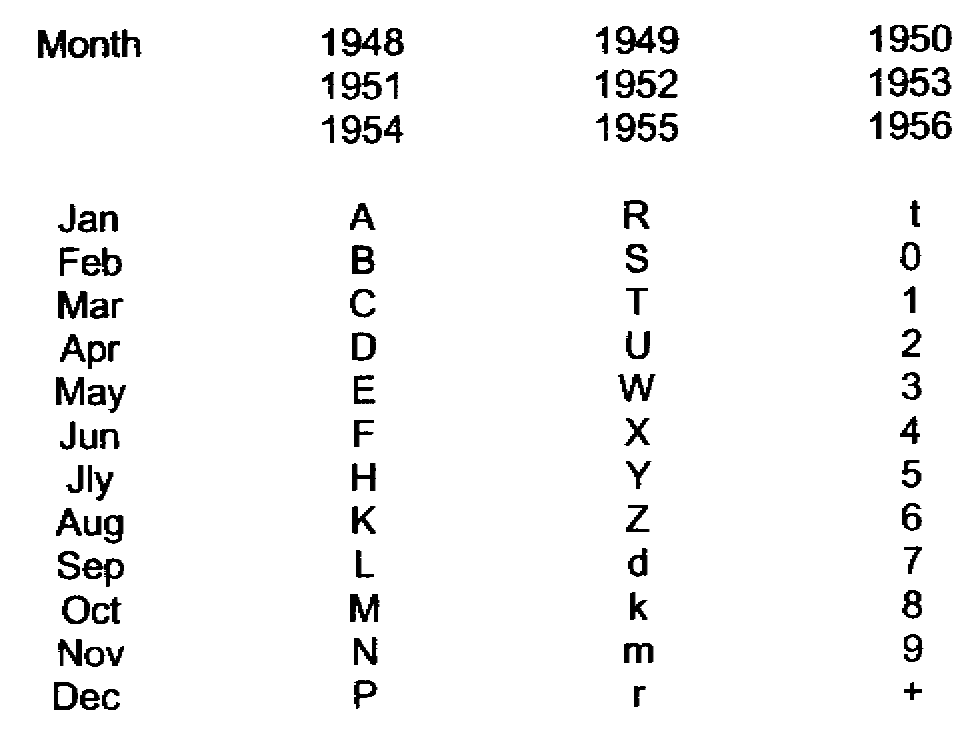
In the code used after 1955, each month is represented by a single letter in the sequence shown on the next chart. Remember, the last digit of the year began to be used with this code, and this will help identify post 1955 tubes.

WEEK: This is the actual week of manufacture within the listed month. Obviously goes as 1=first week, 2= second week, etc. Some documents and other sources I have researched indicate this week code was only added from 1961 onwards. It also does not mean that all tubes made since 1961 have the week code. Use the charts below to see if the week codes even apply to your tube.....
HOW THE CODES APPEAR ON THE TUBE: This can get pretty screwy, too. For the most part, on tubes commonly found in circulation today, the code is located on the side of the glass in dark grey paint, down low just above the bottom. It follows this convention before 1956:
FM
After 1956, the code changed to the following several formats, with the manufacture year (Y) kicking in to the mix:
FYM
Another variation with the addition of the week of manufacture:
TTC
FYMW
Another variation with a triple tube type number and the week:
TTTC
FYMW
And to completely confuse you, yet another triple type number variation without the week:
TTTC
FYM
Here is an example of a Mullard Blackburn, UK factory date code:
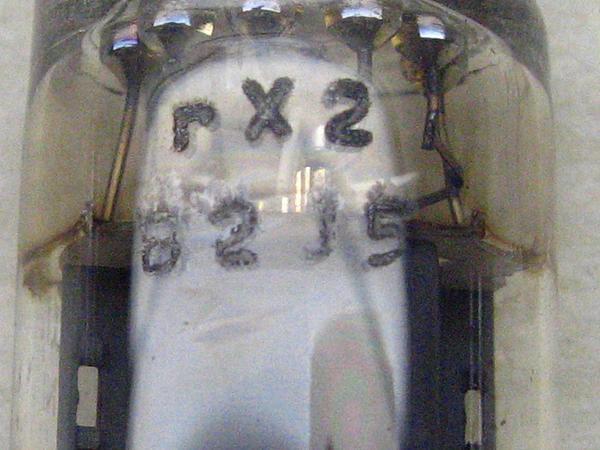
The first line is rX2. rX is the tube type for a 6BQ5 or EL84. 2 is the change code, probably a 2nd production run with updates from run #1. On the second line is B2J5. The B is Blackburn, UK Mullard factory, the 2 is 1962, the J is October, and the 5 is the 5th week of the month. Note the code is printed on the tube upside down. Mullard tubes are the only coded tubes I have seen that SOMETIMES do this, another clue to a genuine Mullard tube. Amperex, Philips, Valvo and other Philips owned factories coded their tubes in a similar fashion, but their codes were not upside down like Mullard sometimes is.
Here is an example of a Siemens-Halske factory code:
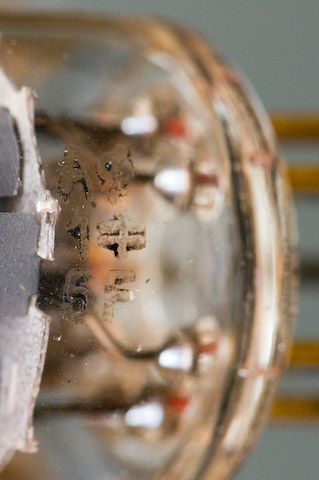
Note the code is broken down into 3 lines of 2 characters each. The first is A0 which is a 6922 or E88CC. The 1 is the change code. The sideways H is the factory mark of Siemens-Halske in Munich, Germany. The 5 is 1965 and the F is June. Siemens never used a week of the month in their codes. Siemens later used metal tags inside the tube on the getter support in which the code was stamped.
Here is an example of a Siemens tube with the metal tag factory and date code. These mostly came into use after 1968.
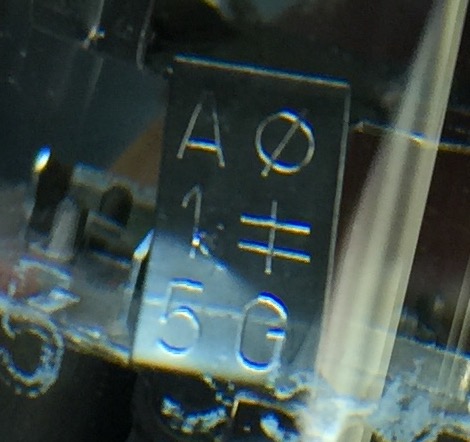
The Siemens tag codes followed the same convention as the codes on the glass, in three lines of two characters each. This one is 1975, July, and not 1965, as the tags were not yet in use in 1965.
THE FACTORY AND COUNTRY CODES: Often quoted by tube experts, and just as often misread and/or misinterpreted by the same experts. The list reproduced here is about the most comprehensive I have seen after researching original Philips documents (poor quality scans of these are available on various websites on the Internet) and several other partial sources. I have scanned a printed list of the most comprehensive factory/country codes, as they contain a great many symbols not found on the standard USA computer keyboard. Remember, this code element follows the tube type code and the change code, which are always the first two codes in the code sequence.
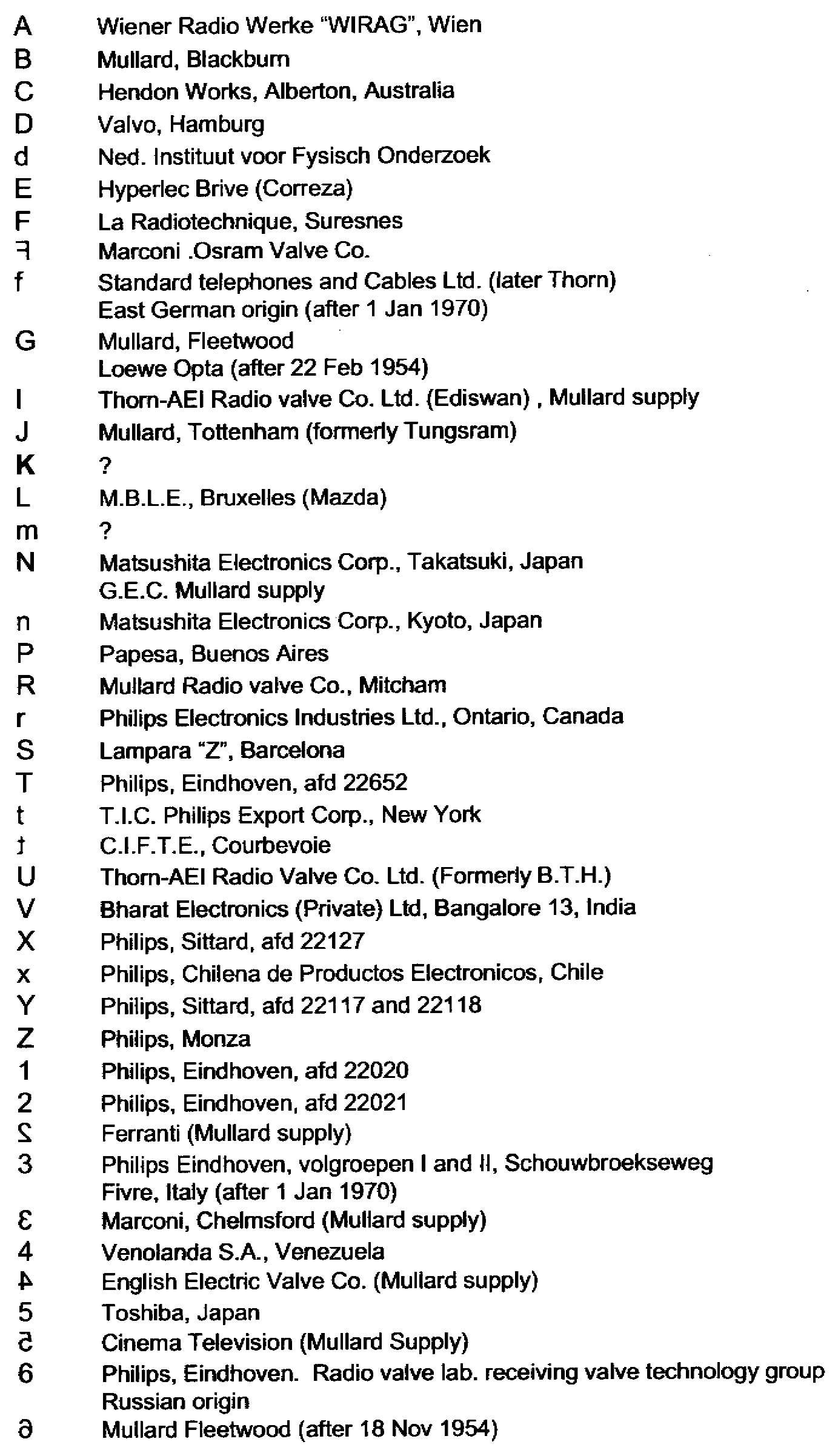
Still with me? Good. There is more:
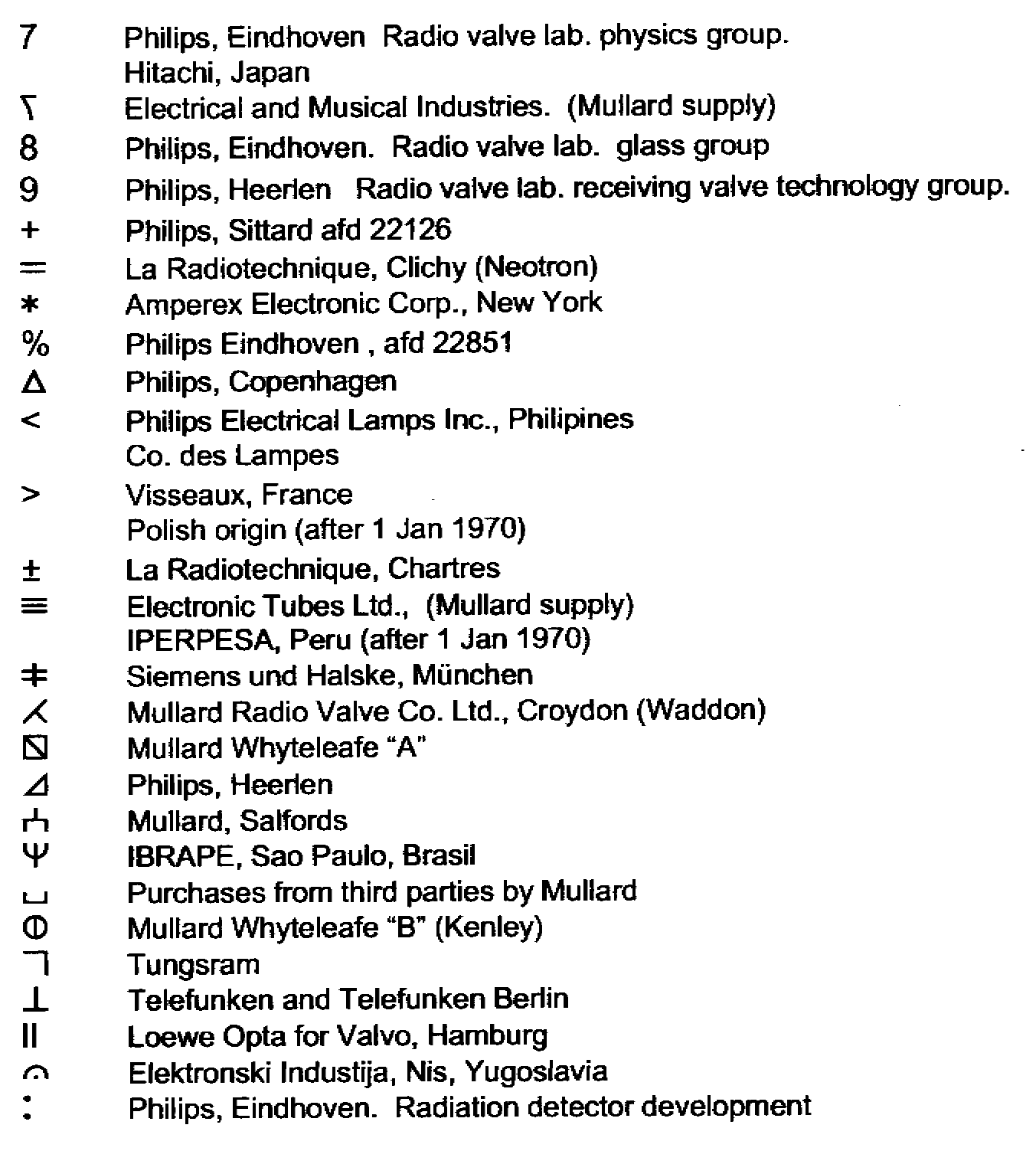
TUBE TYPE CODES: This is a huge list. This code is really only necessary if the factory label becomes rubbed off of the tube, so you can tell what tube you have. Otherwise, it just confirms what the label says. Most audiophiles are concerned with date codes and, to a lesser extent, the factory code. This is for reasons of finding tubes that could be put together in matched pairs. It is more likely that tubes from the same date code and factory will match up better than tubes from different batches and factories. But it is nice to have these codes available if you are not sure what type of tube you have. I have decided to post the scans of the original Philips Holland lists that were created at their headquaters in Eindhoven, The Netherlands. It also contains a page or so of the factory codes as well. This is in .pdf format, and is about 1 meg in size. You can either view or download it by clicking on this link (left click to view, right click and select "save target as" or "save link as" to download): Download or view the tube type code list.
Please let me know if you have any questions on using this page. This material is presented "as found" and "as is" for your use and enjoyment. I hope it helps you identify that rare European tube you have been searching for!
Return to the Audiophile tube page.